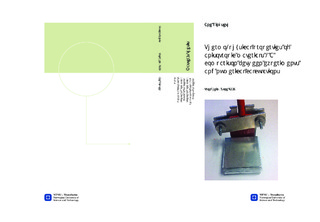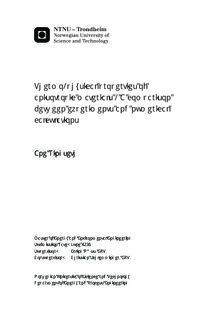| dc.contributor.advisor | Næss, Erling | nb_NO |
| dc.contributor.advisor | Schlemminger, Christian | nb_NO |
| dc.contributor.author | Ringseth, Ane | nb_NO |
| dc.date.accessioned | 2014-12-19T11:52:48Z | |
| dc.date.available | 2014-12-19T11:52:48Z | |
| dc.date.created | 2014-09-25 | nb_NO |
| dc.date.issued | 2014 | nb_NO |
| dc.identifier | 749990 | nb_NO |
| dc.identifier | ntnudaim:11647 | nb_NO |
| dc.identifier.uri | http://hdl.handle.net/11250/235756 | |
| dc.description.abstract | Hydrogen has the potential to become a replacement for fossil energy carriers in the future. Thermophysical properties like thermal conductivity and specific heat will be very important when determining the internal heat and mass transfer of the storage.The transient plane source method is used to analyse the thermophysical properties of different anisotropic materials. The aim is to see if the method can measure an accurate effective thermal conductivity, and to see whether the method can be used for long-term investigation of hydrogen storage materials.Interleaving plates of different isotropic materials interleaved make the anisotropic materials investigated in this thesis. The results from the laboratory are surprising. When the material with the lowest thermal conductivity is stacked closest to the sensor, the effective thermal conductivity got higher than when the material with the highest thermal conductivity was stacked closest to the sensor. This is because of the probing depth of the measurement. It can be hard to interpret the temperature increase in the sensor of anisotropic measurements. The higher the anisotropy, the harder the temperature increase is to interpret. This is the reason why the simulation tool, Comsol Multiphysics, is used to simulate a temperature increase from a sensor. This increase is compared to the increase from the anisotropic measurements in the laboratory.It is calculated that the temperature increase is very dependent of the thermal contact resistance between both the two materials and the materials and the sensor. The thermal contact resistance is dependent of the pressure upon the surface of the material and the surface roughness of the material. Steel, which is cut in the laboratory at NTNU, has some irregularities at the edges, and this will affect the measurements. | nb_NO |
| dc.language | eng | nb_NO |
| dc.publisher | Institutt for energi- og prosessteknikk | nb_NO |
| dc.title | Thermo-physical properties of anisotropic materials - A comparison between experiments and numerical calculations | nb_NO |
| dc.type | Master thesis | nb_NO |
| dc.source.pagenumber | 165 | nb_NO |
| dc.contributor.department | Norges teknisk-naturvitenskapelige universitet, Fakultet for ingeniørvitenskap og teknologi, Institutt for energi- og prosessteknikk | nb_NO |

